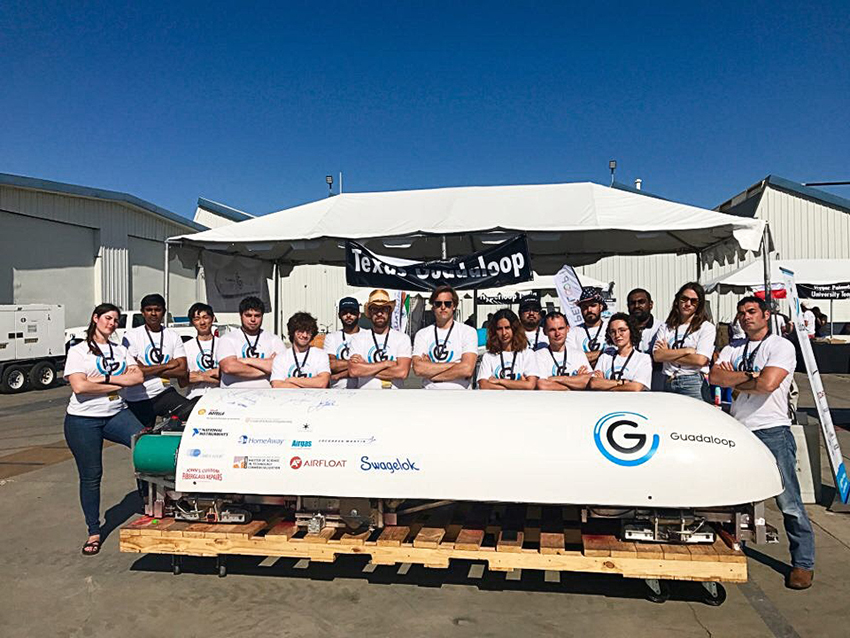UT engineering team Texas Guadaloop brought home an innovation award Sunday at the SpaceX Hyperloop Pod Competition II as the only first-time competitors in the competition.
Texas Guadaloop is a team of undergraduate, graduate and Ph.D. students formed in 2015 to improve transportation. The hyperloop is a carefully engineered tube, and the pod is a small vehicle that uses either air-bearing or magnetic levitation technology. An air-bearing hyperloop pod uses compressed air to propel itself, while magnetic levitation, on the other hand, is achieved through creating an electromagnetic field between the pod and the hyperloop, both methods potentially allowing travel at supersonic speeds.
Team lead James McGinniss, a mechanical engineering graduate student, said SpaceX told the team they would’ve received the “Grit Award” if it existed, as Guadaloop was the only team to take their trailer out from the lot every night and work.
“The never-quit attitude was something that SpaceX really remarked upon,” McGinniss said. “The main goal was to show that the air bearing could work. Getting the innovation award shows that we achieved what we went out there to do.”
After being rejected from the first SpaceX Hyperloop Competition held in January, Guadaloop got to work on developing a hyperloop pod that uses air-bearing technology as opposed to the more widely-explored magnetic levitation technology. Guadaloop’s risk proved rewarding, as they were accepted in February for the second Hyperloop competition held in Hawthorne, California in August along with UT’s other engineering team, 512 Hyperloop. UT was the only school in the world to have two different teams accepted.
Assistant engineering professor Christian Claudel, Guadaloop’s faculty advisor, said that by the time Guadaloop was admitted into the second competition, they already had a unique prototype built, which set them apart from other teams.
“We had a year and a half to test,” Claudel said. “At the time, we had no money, no funds, no anything. I supported them a bit from my research funds so that they could buy parts.”
The pod was put through tests to evaluate communication ability and capacity to prevent the electronics from overheating before it was allowed to compete. McGinniss said the team underwent and passed extensive tests, approximately 50, at the SpaceX Hyperloop Competition, but they had concerns about the pod’s structure.
“Being a first-time competitor, we weren’t really aware of how extensive the testing would be,” McGinniss said. “All the other teams came in really ready to do all these tests. So next year when there’s another competition, we’ll have a huge leg up.”
Business graduate student Deborah Navarro said next year the team will likely rebuild its structure and keep most of the existing subsystems as well as its “Mad Max” theme.
“This version of our pod is called Furiosa, and our next version is going to be called Max,” Navarro said. “We’re definitely going to be a lot more prepared.”





















